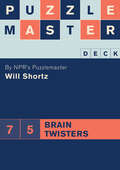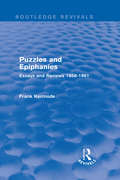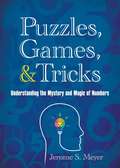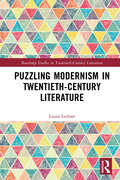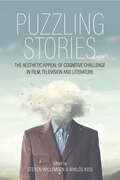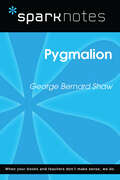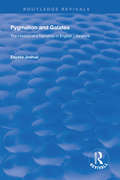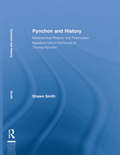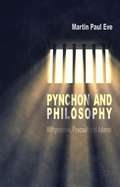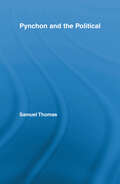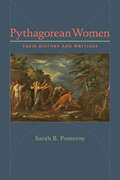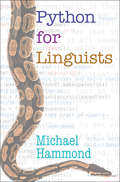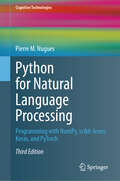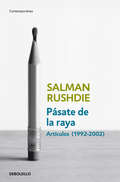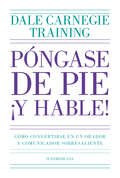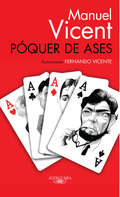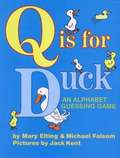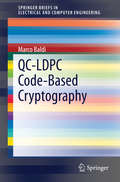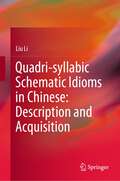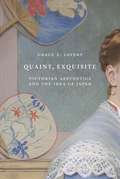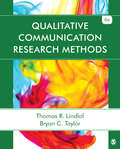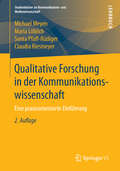- Table View
- List View
Puzzlemaster Deck: 75 Brain Twisters (Puzzlemaster Deck)
by Will ShortzStrain your brain with these seventy-five cognitive challenges you can do anywhere, alone or with others!NPR Puzzlemaster—as well as crossword editor for the New York Times—Will Shortz presents 75 verbal brainteasers to challenge all who enjoy wordplay. None of the puzzles require pen or paper, making them perfect for playing while standing in line, commuting to work, or hanging out with friends.
Puzzles and Epiphanies: Essays and Reviews 1958-1961 (Routledge Revivals)
by Sir Frank KermodeThis book, first published in 1962, is a collection of twenty-four essays written by Frank Kermode between 1958 and early 1961, and are all concerned with criticism and fiction. Puzzles and Epiphanies: Essays and Reviews 1958-1961 includes essays on the works of James Joyce, William Golding, E. M. Forster, and J. D. Salinger, amongst many others. This book is ideal for students of literature.
Puzzles and Maps (Reach Into Phonics Ser.)
by Deborah J. Short Gloria Rodriguez Jay DmitriNIMAC-sourced textbook
Puzzles, Games, and Tricks: Understanding the Mystery and Magic of Numbers
by Jerome S. MeyerHow big is one billion? If you had a billion dollars and invested it in a business that lost a thousand dollars a day, do you know how long it would take you to go broke? Answer: Two thousand years! If the pen on your desk were enlarged a billion times, the point would be longer than the Mississippi River and the cap would be big enough to enclose the Earth. These are the types of cool facts that you can learn from this intriguing book. Although few of us really understand figures greater than a few thousand, we live in a vast world of numbers. Puzzles, Games, and Tricks confronts this world in a fun, informative, and accessible way. Contained within its pages is a gold mine of information for readers to absorb and comprehend, including mathematical puzzles, formulas, games, and tricks that will captivate readers young and old. Author Jerome Meyer provides a fascinating and amazing key to the magic world of numbers. Readers will find Puzzles, Games, and Tricks one of the most readable books on mathematics ever published.
Puzzling Modernism in Twentieth-Century Literature (Routledge Studies in Twentieth-Century Literature)
by Laura LorhanPuzzling Modernism in Twentieth-Century Literature identifies a sustained interest in puzzles, such as the jigsaw and Fifteen Puzzle, dating back to the 1880s in the United States, and argues that puzzles appealed to modernist authors because they offer a framework for acknowledging the grim realities of modern life without sacrificing the possibility for reconnection and regaining a sense of wholeness. However, puzzles also participate in exclusionary discourses and advance regressive agendas, particularly when administered as intelligence tests. Far more than aesthetic models, then, puzzles serve modernist writers as tools for revealing and frequently subverting the rhetorical ends to which these seemingly innocent and trivial pastimes have been put. This volume examines how Ezra Pound, T.S. Eliot, Dorothy Parker, Djuna Barnes, Jean Toomer, and Carson McCullers intervened in cultural debates about race, gender, sexuality, and belonging via their selection of specific puzzles as aesthetic influences and touchstones for interrogating received ideas. Geared toward specialists in twentieth-century Anglo-American literature, this book is, nonetheless, accessible to undergraduates and other educated readerships. Blending close reading with cultural history, Puzzling Modernism in Twentieth-Century Literature offers a nuanced view of American literary history from a time, not unlike our own, in which nativism, intolerance, and fear were endemic.
Puzzling Stories: The Aesthetic Appeal of Cognitive Challenge in Film, Television and Literature
by Miklós Kiss Steven WillemsenMany films and novels defy our ability to make sense of the plot. While puzzling storytelling, strange incongruities, inviting enigmas and persistent ambiguities have been central to the effects of many literary and cinematic traditions, a great deal of contemporary films and television series bring such qualities to the mainstream—but wherein lies the attractiveness of perplexing works of fiction? This collected volume offers the first comprehensive, multidisciplinary, and trans-medial approach to the question of cognitive challenge in narrative art, bringing together psychological, philosophical, formal-historical, and empirical perspectives from leading scholars across these fields.
Puzzling Stories: The Aesthetic Appeal of Cognitive Challenge in Film, Television and Literature
by Miklós Kiss Steven WillemsenMany films and novels defy our ability to make sense of the plot. While puzzling storytelling, strange incongruities, inviting enigmas and persistent ambiguities have been central to the effects of many literary and cinematic traditions, a great deal of contemporary films and television series bring such qualities to the mainstream—but wherein lies the attractiveness of perplexing works of fiction? This collected volume offers the first comprehensive, multidisciplinary, and trans-medial approach to the question of cognitive challenge in narrative art, bringing together psychological, philosophical, formal-historical, and empirical perspectives from leading scholars across these fields.
Pygmalion (SparkNotes Literature Guide Series)
by SparkNotesPygmalion (SparkNotes Literature Guide) by Geroge Bernard Shaw Making the reading experience fun! Created by Harvard students for students everywhere, SparkNotes is a new breed of study guide: smarter, better, faster. Geared to what today's students need to know, SparkNotes provides: *Chapter-by-chapter analysis *Explanations of key themes, motifs, and symbols *A review quiz and essay topicsLively and accessible, these guides are perfect for late-night studying and writing papers
Pygmalion and Galatea: The History of a Narrative in English Literature
by Essaka JoshuaThis title was published in 2001. Pygmalion and Galatea presents an account of the development of the Pygmalion story from its origins in early Greek myth until the twentieth century. It focuses on the use of the story in nineteenth-century British literature, exploring gender issues, the nature of artistic creativity and the morality of Greek art.
Pynchon and History: Metahistorical Rhetoric and Postmodern Narrative Form in the Novels of Thomas Pynchon (Studies in Major Literary Authors)
by Shawn SmithFirst Published in 2005. Routledge is an imprint of Taylor & Francis, an informa company.
Pynchon and Philosophy
by Martin Paul EvePynchon and Philosophy radically reworks our readings of Thomas Pynchon alongside the theoretical perspectives of Wittgenstein, Foucault and Adorno. Rigorous yet readable, Pynchon and Philosophy seeks to recover philosophical readings of Pynchon that work harmoniously, rather than antagonistically, resulting in a wholly fresh approach.
Pynchon and the Political (Studies in Major Literary Authors)
by Samuel ThomasThomas Pynchon's writing has been widely regarded as an exemplary form of postmodern fiction. It is characterized as genre-defying and enigmatic, as a series of complex and esoteric language games. This study attempts to demonstrate, however, that an oblique yet compelling sense of the "political" Pynchon disappers all too easily under the mantle of postmodernity. Innovative and unsettling discussions of freedom, war, labor, poverty, community, democracy, and totalitarianism are passed over in favor of constrictive scientific metaphors and theoretical play. Against this current, this study analyzes Pynchon's fiction in terms of its radical dimension, showing how it points to new directions in the relationship between the political and the aesthetic.
Pythagorean Women: Their History and Writings
by Sarah B. PomeroyLove triangles and Pythagorean women.In Pythagorean Women, classical scholar Sarah B. Pomeroy discusses the groundbreaking principles that Pythagoras established for family life in Archaic Greece, such as constituting a single standard of sexual conduct for women and men. Among the Pythagoreans, women played an important role and participated actively in the philosophical life. While Pythagoras encouraged women to be submissive to men, his reasoning was based on the desire to preserve harmony in the home. Pythagorean Women provides English translations of all the earliest extant examples of literary Greek prose by Neopythagorean women, shedding light on their attitudes about marriage, the home, music, and the cosmos. Pomeroy sets the Pythagorean and Neopythagorean women vividly in their historical, ecological, and intellectual contexts, illustrated with original photographs of sites and artifacts known to these women.
Python for Linguists
by Michael HammondSpecifically designed for linguists, this book provides an introduction to programming using Python for those with little to no experience of coding. Python is one of the most popular and widely-used programming languages as it's also available for free and runs on any operating system. All examples in the text involve language data and can be adapted or used directly for language research. The text focuses on key language-related issues: searching, text manipulation, text encoding and internet data, providing an excellent resource for language research. More experienced users of Python will also benefit from the advanced chapters on graphical user interfaces and functional programming.
Python for Natural Language Processing: Programming with NumPy, scikit-learn, Keras, and PyTorch (Cognitive Technologies)
by Pierre M. NuguesSince the last edition of this book (2014), progress has been astonishing in all areas of Natural Language Processing, with recent achievements in Text Generation that spurred a media interest going beyond the traditional academic circles. Text Processing has meanwhile become a mainstream industrial tool that is used, to various extents, by countless companies. As such, a revision of this book was deemed necessary to catch up with the recent breakthroughs, and the author discusses models and architectures that have been instrumental in the recent progress of Natural Language Processing.As in the first two editions, the intention is to expose the reader to the theories used in Natural Language Processing, and to programming examples that are essential for a deep understanding of the concepts. Although present in the previous two editions, Machine Learning is now even more pregnant, having replaced many of the earlier techniques to process text. Many new techniques build on the availability of text. Using Python notebooks, the reader will be able to load small corpora, format text, apply the models through executing pieces of code, gradually discover the theoretical parts by possibly modifying the code or the parameters, and traverse theories and concrete problems through a constant interaction between the user and the machine. The data sizes and hardware requirements are kept to a reasonable minimum so that a user can see instantly, or at least quickly, the results of most experiments on most machines.The book does not assume a deep knowledge of Python, and an introduction to this language aimed at Text Processing is given in Ch. 2, which will enable the reader to touch all the programming concepts, including NumPy arrays and PyTorch tensors as fundamental structures to represent and process numerical data in Python, or Keras for training Neural Networks to classify texts. Covering topics like Word Segmentation and Part-of-Speech and Sequence Annotation, the textbook also gives an in-depth overview of Transformers (for instance, BERT), Self-Attention and Sequence-to-Sequence Architectures.
Pásate de la raya: Artículos, 1992-2002
by Salman RushdieUna colección de los artículos de prensa de Salman Rushdie escritos entre 1992 y 2002 que recoge sus opiniones. Los artículos que componen este volumen nos descubren el lado más personal y más cercano de uno de nuestros autores contemporáneos más importantes. De una manera franca y directa, Salman Rushdie nos habla de su afición al fútbol, su predilección por la música de U2 o su entusiasmo por El mago de Oz; asimismo, nos da su opinión sobre política o sobre su propia fetua, y también evalúa la obra de varios escritores. Pero lo más valioso de esta recopilación es que nos proporciona la visión íntima de un escritor e intelectual que analiza y juzga nuestra sociedad actual con una profundidad y una precisión expresiva que pocos alcanzan. Un libro que ofrece placeres inesperados a todos los que disfrutan del poder de la palabra. Opinión:«Pásate de la raya es un reconstituyente para la moral... Un libro acerca de la libertad, sus glorias y su alto precio.»The Globe and Mail
Póngase de pie ¡y hable!: Cómo convertirse en un orador y comunicador sobresaliente
by Dale Carnegie TrainingUn libro con las herramientas necesarias para convertirse, velozmente, en un gran orador a través de las verdaderas claves para lograr que sus oyentes no se aburran, pero también para informarlos, persuadirlos e inspirarlos a la acción a través de su mensaje. Además, le enseñará a perder el miedo de hablar en público. De manera presencial o virtual, son cada vez más las instancias en las que tenemos que hablar en público, algo para lo cual no todo el mundo está preparado. Falta de experiencia, no saber qué decir, dudas sobre el tema a tratar y hasta pánico escénico son las dificultades más comunes de quienes se resisten a presentarse ante un auditorio. En este libro se ofrecen las herramientas necesarias para convertirse, en el menor tiempo posible, en un magnífico orador. Aprenderá a organizar una charla, ya se trate de una de cinco minutos frente a un grupo reducido o de otra de media hora ante un auditorio repleto. Descubrirá cuáles son las verdaderas claves para lograr que sus oyentes no se aburran, pero también para informarlos, persuadirlos e inspirarlos a la acción a través de su mensaje. Quizá lo más importante sea que Póngase de pie ¡y hable! le enseñará a perder definitivamente el miedo de hablar en público.
Póquer de ases
by Manuel Vicent Fernando VicenteEn este libro no hay retratos sino radiografías de grandes escritores contemporáneos. En ellas, si se miran al trasluz, como las placas de rayos X, aparecerá todo lo que nuestra memoria debe a su genio. La vida es un caos entre dos silencios, según Samuel Beckett; ningún sabor es comparable al del pecado, dice Graham Greene; para Joseph Conrad el mar es una moral; el ciego Borges solo vislumbra la luz del ámbar; las páginas de Dorothy Parker liberan un humo de lejanas fiestas junto con el jazz, los martinis y las franelas blancas de Scott Fitzgerald; la culpa te convertirá en el escarabajo de Kafka mientras Bioy Casares se seduce a sí mismo ante el espejo y Virginia Woolf se adentra en el río con el abrigo cargado de piedras.
Q Is for Duck: An Alphabet Guessing Game
by Mary Elting Michael FolsomWhy is Q for Duck? Why is D for Mole? Why is G for Horse? I bet you can guess why I is for Mosquito--because Mosquito bites ITCH!
QA Compact (2nd edition)
by Lynn Quitman Troyka Douglas HesseQA Compact offers easy, access to the information you need about the writing process, from mastering grammar to using correct punctuation, from writing research papers to documenting sources, and from writing for the Web to writing using visuals.
QC-LDPC Code-Based Cryptography
by Marco BaldiThis book describes the fundamentals of cryptographic primitives based on quasi-cyclic low-density parity-check (QC-LDPC) codes, with a special focus on the use of these codes in public-key cryptosystems derived from the McEliece and Niederreiter schemes. In the first part of the book, the main characteristics of QC-LDPC codes are reviewed, and several techniques for their design are presented, while tools for assessing the error correction performance of these codes are also described. Some families of QC-LDPC codes that are best suited for use in cryptography are also presented. The second part of the book focuses on the McEliece and Niederreiter cryptosystems, both in their original forms and in some subsequent variants. The applicability of QC-LDPC codes in these frameworks is investigated by means of theoretical analyses and numerical tools, in order to assess their benefits and drawbacks in terms of system efficiency and security. Several examples of QC-LDPC code-based public key cryptosystems are presented, and their advantages over classical solutions are highlighted. The possibility of also using QC-LDPC codes in symmetric encryption schemes and digital signature algorithms is also briefly examined.
Quadri-syllabic Schematic Idioms in Chinese: Description and Acquisition
by Liu LiThis book offers an insightful description of the productive behavior of four-character schematic idiomatic expressions (SIEs) in Mandarin and explores from a usage-based perspective the issue of how young learners acquire the partial productivity of these expressions. The beginning chapters contribute to a constructional understanding of the quadri-syllabic SIEs and an in-depth distributional analysis of three typical schematic patterns based on natural corpus data. The following chapters present detailed reports on four experimental studies to account for the factors that play significant roles in the learning process of SIEs from adolescence to adulthood. In the final chapter, the author concludes that acquisition of SIEs is as an interactive process shaped by input frequency, structural complexity, internal semantic relation, and chunking effect of open morphemes at different age levels. These findings enrich current understandings on constructional idioms and the emergentist model in idiom learning with a cross-linguistic focus on Mandarin unique quadri-syllabic SIEs. Language teachers, researchers, and postgraduate students who are interested in studies of idiomaticity. Construction grammar and usage-based learning model will find this book sufficiently informative and intriguing.
Quaint, Exquisite: Victorian Aesthetics and the Idea of Japan
by Grace LaveryFrom the opening of trade with Britain in the 1850s, Japan occupied a unique and contradictory place in the Victorian imagination, regarded as both a rival empire and a cradle of exquisite beauty. Quaint, Exquisite explores the enduring impact of this dramatic encounter, showing how the rise of Japan led to a major transformation of Western aesthetics at the dawn of globalization.Drawing on philosophy, psychoanalysis, queer theory, textual criticism, and a wealth of in-depth archival research, Grace Lavery provides a radical new genealogy of aesthetic experience in modernity. She argues that the global popularity of Japanese art in the late nineteenth century reflected an imagined universal standard of taste that Kant described as the “subjective universal” condition of aesthetic judgment. The book features illuminating cultural histories of Gilbert and Sullivan’s Mikado, English derivations of the haiku, and retellings of the Madame Butterfly story, and sheds critical light on lesser-known figures such as Winnifred Eaton, an Anglo-Chinese novelist who wrote under the Japanese pseudonym Onoto Watanna, and Mikimoto Ryuzo, a Japanese enthusiast of the Victorian art critic John Ruskin. Lavery also explains the importance and symbolic power of such material objects as W. B. Yeats’s prized katana sword and the “Japanese vellum” luxury editions of Oscar Wilde.Quaint, Exquisite provides essential insights into the modern understanding of beauty as a vehicle for both intimacy and violence, and the lasting influence of Japanese forms today on writers and artists such as Quentin Tarantino.
Qualitative Communication Research Methods
by Thomas R. Lindlof Bryan C. TaylorQualitative Communication Research Methods, Fourth Edition introduces you to qualitative research in speech and mass communication. Award-winning scholars and authors Thomas R. Lindlof and Bryan C. Taylor guide you through every step of the qualitative process, from developing research topics and questions through writing a final report. You are given numerous examples of work in the field to illustrate how studies are designed, carried out, written, evaluated, and related to theory. In addition to covering the theories and methods currently used in qualitative communication research, the authors also discuss important trends influencing the future of that research, helping you make informed judgments about the significance and consequences of recent trends. New to the Fourth Edition: A new chapter titled “The Diversity of Qualitative Research in Communication Subfields” provides readers with a complete guide to the field’s distinctive subfields and enables you to identify the research agenda that best represents your own interests.Two rising subfields— Political Communication and Communication Activism— have been added, resulting in 13 subfields covered. Two major phases of data analysis have been split into separate chapters, enabling you to concentrate on the initial steps of analysis before moving on to the interpretation phase of analysis. Discussions of important intellectual and institutional trends currently reshaping the landscape of qualitative research, including Materialist Theory, Big Data, and Open-Access publishing, provide you with cutting-edge knowledge and skills that affect what you study and how you study it. An analysis of new developments in media and technology shows you how social media networks and other digital platforms are not only topics of research, but also the means for collecting and analyzing data.
Qualitative Forschung in der Kommunikationswissenschaft: Eine Praxisorientierte Einführung (Studienbücher Zur Kommunikations- Und Medienwissenschaft Ser.)
by Michael Meyen Claudia Riesmeyer Maria Löblich Senta Pfaff-RüdigerDas Lehrbuch versteht sich als Anleitung zum Forschen: Wo lassen sich qualitative Methoden in der Kommunikationswissenschaft gewinnbringend einsetzen? Wie muss eine Untersuchung aufgebaut werden und wie werden Befragte oder Texte so ausgewählt, dass man am Ende verallgemeinern kann? Wie konstruiere ich einen Interview-Leitfaden und was muss ich beachten, damit eine Gruppendiskussion oder eine Beobachtung wirklich funktionieren? Befrage ich offline oder online und was kann ich tun, damit ich nicht in einem Materialberg untergehe? Mit zahlreichen Beispielen aus der Forschungspraxis.
